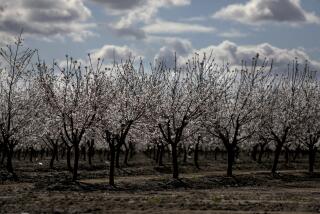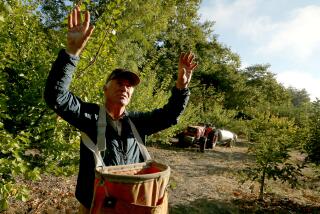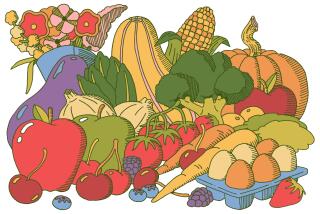Sales of Nursery Items Bloom
Although strawberries remained the top crop in 2003, nursery stock surpassed lemons for the first time as the second largest agricultural product in Ventura County in a year that saw gross sales of $1.1 billion.
The value of nursery stock, which consists of flowers, bushes and small trees for landscaping, reached $173.26 million, driven in part by an increase in new home sales in Ventura County, Agricultural Commissioner Earl McPhail said at a news conference Thursday in Santa Paula.
“Nursery stock may be our No. 1 commodity one day,” he said.
Despite an overall $42-million drop in agricultural production, the county remains one of the state’s premiere farming regions. McPhail said the dip was indicative of a statewide trend resulting from early rains and overproduction.
“This was a so-so year, but we’ll get back to normal,” he said.
Strawberries remained at the top of the production list with gross sales of $300,746,000, up from $297,924,000 the previous year, as the amount of cropland devoted to the juicy fruit expanded by 2,000 acres. Ventura County remains the second-biggest strawberry producer in the state, behind the Watsonville-Salinas area.
But not all sectors fared as well. Overall, sales of fruit and nut crops decreased by $39.35 million, with lemons seeing a total gross of $148.63 million, or a drop of about 19%. Lemons had dominated local crops for half a century, but overproduction and decreased demand in recent years have led to lower sales.
In light of growing competition from South American citrus farmers, however, McPhail anticipated a lemon comeback in Ventura County. “We make a lot of lemonade,” he said.
Raspberries, which broke into the top 10 last year, maintained their spot at No. 10, despite an 11% sales decrease that dropped total revenues to $17.69 million.
Other fruits such as grapefruit and oranges saw decreased revenues and in some cases, decreased acreage, as did vegetables such as beans, cabbage and celery. Overall, the value of vegetables dropped by $5.28 million.
Avocados, the No. 5 crop, recorded more than $100 million in sales, a roughly 1% jump resulting from increased prices, production and marketing. McPhail credited, in part, recent campaigns in the eastern United States geared at educating buyers about proper avocado use and ripening techniques.
Still, McPhail said California avocado farmers remained wary of the market in light of a pending U.S. agreement with Mexico to import Haas avocados to the state. The law would not only deal an economic blow to the county’s 200 avocado farmers, but would also carry the risk of introducing the Mediterranean fruit fly, which has been destructive to citrus crops, prompting quarantine laws worldwide.
Officials with Limoneira, a top avocado producer in Ventura County, anticipated fewer problems if Mexican farmers adhere to importation protocols.
“We’ve known for quite a while that this was going to happen with Mexico and that we’re going to have to adapt to a global marketplace,” said Gus Gunderson, Limoneira’s director of farming.
*
(BEGIN TEXT OF INFOBOX)
Top 10 Ventura County Crops
The total value of the county’s agricultural output is $1.1 billion in 2003.
* 1. Strawberries $300,746,000
* 2. Nursery Stock $173,262,000
* 3. Lemons $148,634,000
* 4. Celery $113,381,000
* 5. Avocados $100,760,000
* 6. Tomatoes $46,562,000
* 7. Cut flowers $44,515,000
* 8. Peppers $22,964,000
* 9. Valencia oranges $19,156,000
* 10. Raspberries $17,692,000
Ventura County Agricultural Commissioner
More to Read
Inside the business of entertainment
The Wide Shot brings you news, analysis and insights on everything from streaming wars to production — and what it all means for the future.
You may occasionally receive promotional content from the Los Angeles Times.










